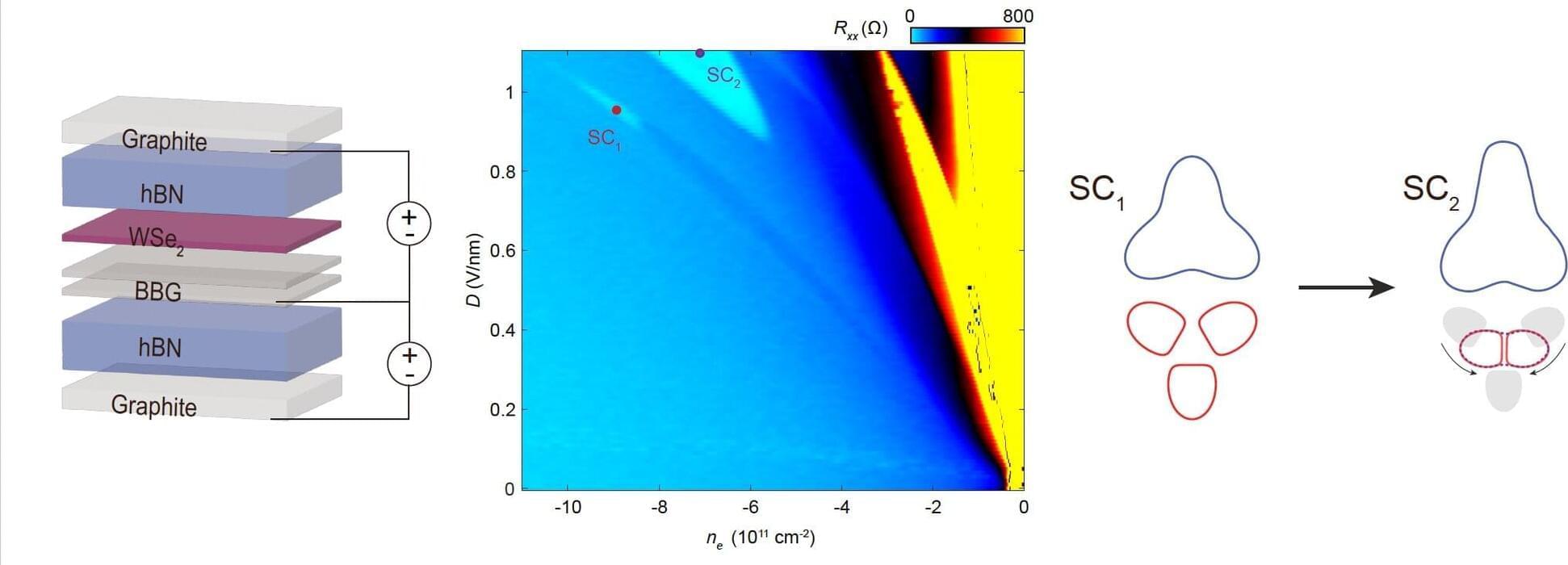Superconductivity is a widely sought after material property, which entails an electrical resistance of zero below a specific critical temperature. So far, it has been observed in various materials, including recently in so-called multilayer graphene allotropes (i.e., materials that consist of several layers of a hexagonal carbon lattice).
Recent studies found that when bilayer graphene is placed on a WSe2 (tungsten-diselenide) substrate, its superconducting phase is enhanced. This results in a greater charge carrier density and higher critical temperature (i.e., the temperature at which a material becomes a superconductor).
Researchers at University of California at Santa Barbara and California Institute of Technology have carried out a study aimed at further investigating this enhancement in the graphite allotrope Bernal bilayer graphene. Their paper, published in Nature Physics, reports the observation of two distinct superconducting states in this material, challenging current models of electron pairing in graphite allotropes.
